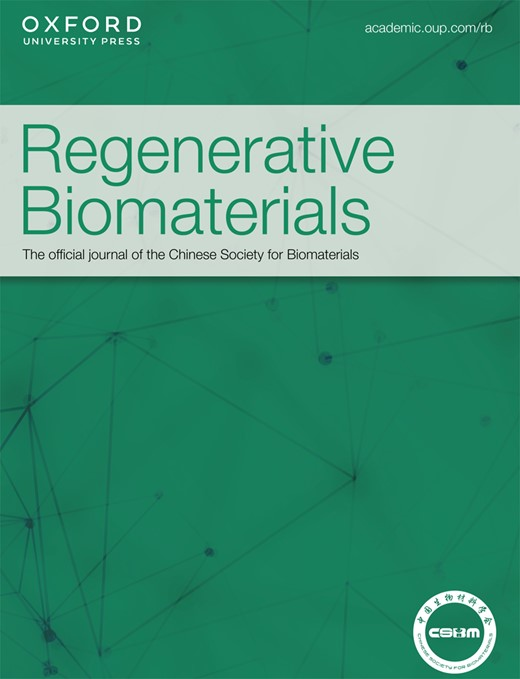Regulation of mitochondrial network architecture and function in mesenchymal stem cells by micropatterned surfaces
IF 5.6
1区 医学
Q1 MATERIALS SCIENCE, BIOMATERIALS
引用次数: 0
Abstract
Mitochondrial network architecture, which is closely related to mitochondrial function, is mechanically sensitive and regulated by multiple stimuli. However, the effects of microtopographic cues on mitochondria remain poorly defined. Herein, polycaprolactone (PCL) surfaces were used as models to investigate how micropatterns regulate mitochondrial network architecture and function in rat adipose-derived stem cells (rASCs). It was found that large pit (LP) induced rASCs to form larger and more complex mitochondrial networks. Consistently, the expression of key genes related to mitochondrial dynamics revealed that mitochondrial fusion (MFN1 and MFN2) and midzone fission (DRP1 and MFF) were increased in rASCs on LP. In contrast, the middle pit (MP) enhanced mitochondrial biogenesis, as evidenced by the larger mitochondrial area and higher expression of PGC-1. Both LP and MP promoted ATP production in rASCs. It is likely that LP increased ATP levels through modulating mitochondrial network architecture while MP stimulated mitochondria biogenesis to do so. Our study clarified the regulation of micropatterned surfaces on mitochondria, highlighting the potential of LP and MP as a simple platform to stimulate mitochondria and the subsequent cellular function of MSCs.微图案表面对间充质干细胞线粒体网络结构和功能的调控
线粒体网络结构与线粒体功能密切相关,具有机械敏感性,并受多种刺激调控。然而,微地形线索对线粒体的影响仍不十分明确。本文以聚己内酯(PCL)表面为模型,研究微图案如何调节大鼠脂肪来源干细胞(rASCs)的线粒体网络结构和功能。研究发现,大凹坑(LP)诱导 rASCs 形成更大、更复杂的线粒体网络。线粒体动力学相关关键基因的表达显示,线粒体融合(MFN1和MFN2)和中区裂变(DRP1和MFF)在LP上的rASCs中有所增加。相比之下,中间凹陷(MP)增强了线粒体的生物生成,线粒体面积增大和PGC-1的表达增加就是证明。LP 和 MP 都促进了 rASCs 的 ATP 生成。LP可能是通过调节线粒体网络结构来提高ATP水平的,而MP则是通过刺激线粒体的生物生成来提高ATP水平的。我们的研究阐明了微图案表面对线粒体的调节作用,凸显了 LP 和 MP 作为刺激线粒体和间充质干细胞后续细胞功能的简单平台的潜力。
本文章由计算机程序翻译,如有差异,请以英文原文为准。
求助全文
约1分钟内获得全文
求助全文
来源期刊

Regenerative Biomaterials
Materials Science-Biomaterials
CiteScore
7.90
自引率
16.40%
发文量
92
审稿时长
10 weeks
期刊介绍:
Regenerative Biomaterials is an international, interdisciplinary, peer-reviewed journal publishing the latest advances in biomaterials and regenerative medicine. The journal provides a forum for the publication of original research papers, reviews, clinical case reports, and commentaries on the topics relevant to the development of advanced regenerative biomaterials concerning novel regenerative technologies and therapeutic approaches for the regeneration and repair of damaged tissues and organs. The interactions of biomaterials with cells and tissue, especially with stem cells, will be of particular focus.
 求助内容:
求助内容: 应助结果提醒方式:
应助结果提醒方式:


